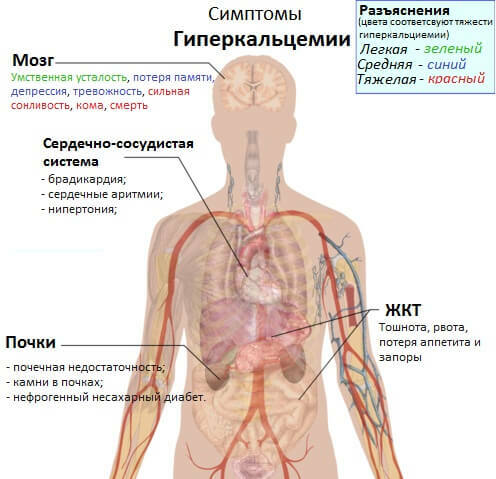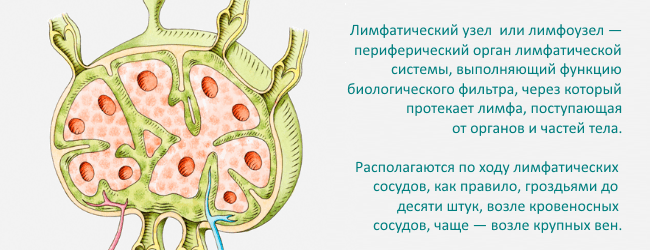Thalassemia: what is this disease, symptoms, analyzes, types (classification)
Content
- What is thalassemia?
- Thalassemia classification
- Alpha thalassemia
- Beta thalassemia
- What examinations, analyzes are needed?
- Thalassemia treatment
- Related Videos
What is thalassemia?
Thalassemia (Cooley's anemia) Is a group of inherited disorders that affect the amount of hemoglobin produced by a person. Hemoglobin belongs to a family of compounds consisting of heme (an iron complex) and various globins (protein chains that surround the heme complex).
Hemoglobin (Hb) molecules are found in all red blood cells and are the cause of their red color. They bind oxygen in the lungs, carry it through the bloodstream, and release it into body tissues. The different types of hemoglobin are classified according to the type of protein chains they contain.
Normal adult hemoglobins include:
- Hemoglobin A (makes up about 95% - 98% of the adult Hb). HbA contains two alpha (α) protein chains and two beta (ß) chains.
- HbA2 (makes up about 2% - 3.5% of adult Hb) has two alpha (α) and two delta (δ) chains.
- HbF (up to 2%). It is the main hemoglobin produced by the fetus during pregnancy. Its production usually drops to a low level within a year after birth. HbF has two alpha (α) and two gamma (γ) chains.
Mutations in the genes encoding globin chains can cause disruptions in the production of hemoglobin. There are 4 genes that code for the alpha globin chain and 2 genes that code for the beta globin chain.
Hereditary disorders of hemoglobin production fall into two categories:
- Thalassemia: decreased production of normal hemoglobin
- Hemoglobinopathy: The production of an abnormal hemoglobin molecule
Thalassemias are a group of disorders in which mutations in one or more of the alpha or beta globin genes cause a decrease in the amount of HbA produced. This leads to a decrease in the level of HbA, a relative increase in the amount of minor hemoglobins HbA2 and HbF, and, possibly, the detection of unusual types of hemoglobin.
 Genetics (clickable)
Genetics (clickable)Thalassemias are usually classified according to the type of globin chain, the synthesis of which is reduced.
Thalassemia classification
Alpha thalassemia

Alpha thalassemia results from a deletion or mutation in one or more copies of the 4 alpha globin gene. The more genes are affected, the less alpha globin is produced. The four different types of alpha thalassemia include:
- Alpha thalassemia trait (1 affected gene). The silent carrier will have normal hemoglobin levels and red blood cell counts that are normal or show a slightly reduced MCH (hypochromia). Carriers can pass on the affected gene to their offspring. Often these people are identified only after the birth of a child with HbH disease or a sign of alpha thalassemia.
- Alpha thalassemia trait (2 affected genes). Patients with a sign of alpha thalassemia have smaller (microcytic), pale (hypochromic) red blood cells and mild chronic anemia, but they usually do not experience any symptoms. This is anemiathat does not respond to iron supplements. Diagnosis of the sign of alpha thalassemia usually occurs by excluding other causes of microcytic anemia. Confirmatory testing by DNA analysis is an important part of the alpha thalassemia diagnosis process. because on each chromosome there are two copies (HbA1 and HbA2) of the alpha chain gene. If a person has lost both copies of one chromosome, this has different consequences for the transmission of more serious illness to their children than if they lost one copy from each of two different chromosomes. See the section on DNA analysis below.
- Hemoglobin H disease (3 affected genes). Under this condition, a large decrease in the amount of alpha-globin chains produced causes an excess beta chains, which then aggregate into beta4 tetramers (groups of 4 beta chains) known as hemoglobin H. HbH disease can cause moderate to severe anemia and splenomegaly (increased spleen). The clinical picture associated with HbH disease is extremely diverse. In some people, it is asymptomatic, while others have severe anemia. Hemoglobin H disease is most common in people of southeastern or eastern Mediterranean descent.
- Alpha thalassemia major (also called fetal hydrops, 4 affected genes). This is the most severe form of alpha thalassemia. Under these conditions, alpha globin is not produced, therefore, HbA or HbF is also not produced. Fetuses affected by alpha thalassemia become anemic in early pregnancy. They become edematous (retain fluid), and often have enlarged hearts and liver. This diagnosis is often made in the last months of pregnancy when an ultrasound scan of the fetus indicates fetal edema. In about 80% of cases, the mother develops toxemia and may develop severe postpartum hemorrhage. Babies with alpha thalassemia major are usually premature, stillborn, or die shortly after birth.
Read also:Causes of increased hemoglobin in the blood in men, as manifested, complaints, treatment
People with alpha thalassemia may be misdiagnosed by careless doctors as iron deficiency, since iron deficiency also leads to the appearance of small pale (microcytic hypochromic) erythrocytes.
Importantthat iron treatment in thalassemia patients is prescribed only when specific tests for iron (ferritin, serum iron, TIBC, transferrin) have confirmed iron deficiency. This is especially important in alpha thalassemia where there is a small chance of developing a dangerous iron overload.
Alpha thalassemia is most common in people with ethnic backgrounds from Southeast Asia, South China, the Middle East, India, Africa, and the Mediterranean.
Beta thalassemia

Beta thalassemia occurs due to mutations in one or both of the beta globin genes. Between 100 and 200 mutations have been identified, but only about 20 are common.
The severity of beta thalassemia anemia depends on which mutations are present and whether they reduce the production of beta-globin (the so-called beta + thalassemia) or completely eliminate it (the so-called beta thalassemia). The different types of beta thalassemia are as follows:
- Beta thalassemia with characteristic. A person with this disease has one normal gene and one with a mutation. They usually do not experience any health problems other than microcytosis (small red blood cells) and possible mild anemia that will not respond to iron supplements. This gene mutation can be passed on to the children of an individual.
- Thalassemia intermedia. In this condition, the sick person has two abnormal genes, but they still produce some beta globin. The severity of anemia that occurs and health problems depend on the mutations present. The dividing line between thalassemia intermedia and thalassemia major is the degree of anemia and the number and frequency of blood transfusions needed to treat it. Those with thalassemia intermedia sometimes need transfusions, but not on a regular basis.
- Thalassemia major. This is the most severe form of beta thalassemia. The patient has two abnormal genes that cause either a severe decrease or a complete lack of beta globin production, preventing the production of significant amounts of HbA. This condition usually appears in a child after 3 months of age and causes life-threatening anemia. This anemia requires regular blood transfusions throughout life and significant ongoing medical attention. Over time, these frequent transfusions lead to excess iron in the body. If left untreated, this excess iron can be deposited in the liver, heart, and other organs and can lead to premature death from organ failure.
Read also:The spleen: what is responsible for, where to be, how it hurts, symptoms and treatment
Other forms of thalassemia occur when the beta thalassemia gene is inherited in conjunction with the hemoglobin variant gene. The most important of these are:
- HbE - beta thalassemia. HbE is one of the most common hemoglobin variants, found predominantly in people of Southeast Asian descent. If a person inherits one HbE gene and one beta thalassemia gene, the combination provokes HbE beta thalassemia, which causes moderately severe anemia similar to beta thalassemia intermedia.
- HbS - beta thalassemia or sickle cell - beta thalassemia. HbS is one of the best known hemoglobin variants. Inheritance of one HbS gene and one beta thalassemia gene results in HbS beta thalassemia. The severity of the condition depends on the amount of beta globin produced by the beta gene. If beta-globin is not produced, the clinical picture is almost identical to sickle cell anemia.
What examinations, analyzes are needed?
General clinical blood test (CBC). KLA is an analysis of cells and fluid in the blood. Among other things, the KLA will tell the doctor how many red blood cells are in the blood, how much hemoglobin they contain, and help measure the size and shape of the red blood cells present. These variables are called erythrocyte indices and include MCH (mean corpuscular hemoglobin) and MCV (mean corpuscular volume) as measurements of hemoglobin content and red blood cell size.
Low MCH or MCV are often the first sign of thalassemia. If MCH or MCV levels are low and iron deficiency is ruled out, the person may be a carrier of thalassemia. With iron deficiency, thalassemia is difficult to rule out.
Microscopic examination of a blood smear. In this test, a thin microscopic layer of blood is examined on a glass slide under a microscope. The number and type of white blood cells, red blood cells, and platelets can be counted manually and evaluated if they are normal and mature. Various disorders affect the normal production of blood cells. In thalassemia, red blood cells are often microcytic (small) with a low MCV. They can also:
- Being hypochromic (pale - indicates low hemoglobin, than usual).
- Vary in size (anisocytosis) and shape (poikilocytosis).
- Being a fetus (not normal in a mature red blood cell).
- Be distorted, look like apples under the microscope.
Iron analysis. The assay may include: Iron, Ferritin, UIBC, TIBC, and Transferrin Percent Saturation. These tests measure various aspects of the storage and use of iron in the body. They help determine if iron deficiency is the cause and / or exacerbation of the patient's anemia. One or more patients with thalassemia may also be monitored for the degree of iron overload.
Assessment of hemoglobinopathy (Hb). This test measures the type and relative amount of hemoglobin present in red blood cells. Hemoglobin A, composed of alpha and beta globin, is the main normal type of hemoglobin found in adults. A higher percentage of HbA2 and / or HbF is usually seen when beta thalassemia is present. HbH can be seen in alpha thalassemia, but only when at least two of the four alpha genes are deleted or mutated.
Read also:Increased blood eosinophils in an adult
DNA analysisIn many cases, DNA analysis is not required as a diagnosis can be made from the results of the above tests. DNA testing is most commonly used in families with alpha thalassemia. This test is used to study deletions and mutations in alpha and less commonly beta globin-producing genes.
Family research can be performed to assess the status of the carrier and the types of mutations present in other family members. DNA testing is an important tool for making an accurate diagnosis of thalassemia. Particularly in alpha thalassemia, it is important to know whether a person with the alpha thalassemia trait has two mutated genes on one chromosome or one on each chromosome.
Thalassemia treatment
Most people with thalassemia do not need treatment. All people diagnosed with thalassemia who are planning a family are strongly advised to seek genetic adviceto understand the consequences for their offspring. It is required that the laboratory conducted a genetic study partner so that the genetic counselor can provide accurate information about the risk of passing the affected genes to their children and the severity of thalassazemia or hemoglobinopathy that may develop.
Patients with hemoglobin H or beta thalassemia intermedia will experience varying degrees of anemia throughout their lives. They may lead a relatively normal life, but require regular monitoring and sometimes may need blood transfusion.
Folic acid supplements are often prescribed to combat anemia, but iron supplements should be avoided unless iron deficiency is confirmed by more specific studies.
Changes in red blood cell counts are often observed when a woman is pregnant, and this can sometimes lead to severe anemia. Understanding the impact of a thalassemia diagnosis on pregnancy and the potential health consequences of a couple's offspring is one of the most important reasons for making an accurate diagnosis of thalassemia.
Patients with beta thalassemia usually require a blood transfusion every 3-4 weeks throughout their lives. These transfusions help keep the hemoglobin concentration high enough to provide oxygen to the body and prevent growth disorders and organ damage.
Frequent transfusions, however, raise iron to toxic levels, which leads to iron deposition in the liver, heart, and other organs.
Regular iron chelation therapy used to lower iron levels in the body. This involves administering a drug that binds to the iron and helps flush it out of the body through urine. Splenectomy (surgery to remove the spleen) is also common.
Babies with alpha thalassemia major are usually born prematurely, stillborn, or die shortly after birth. Treatment focuses on identifying the condition and terminating the pregnancy or monitoring for complications in the mother.
Experimental treatments such as fetal blood transfusions have been successful in very few cases at birth.



